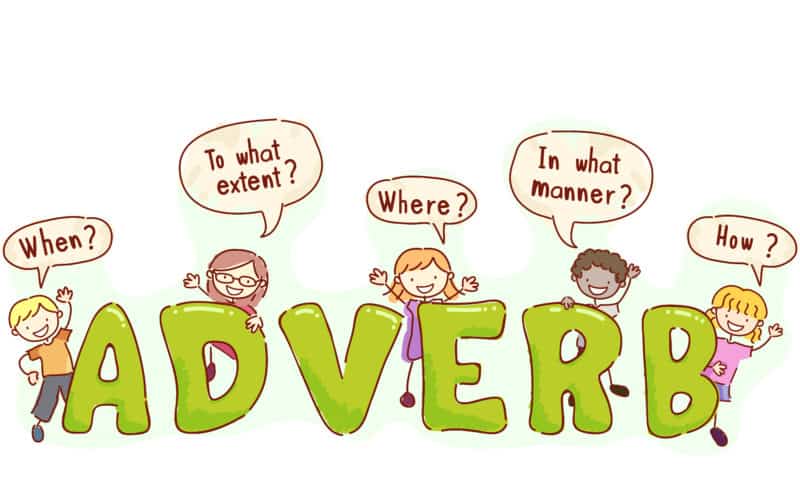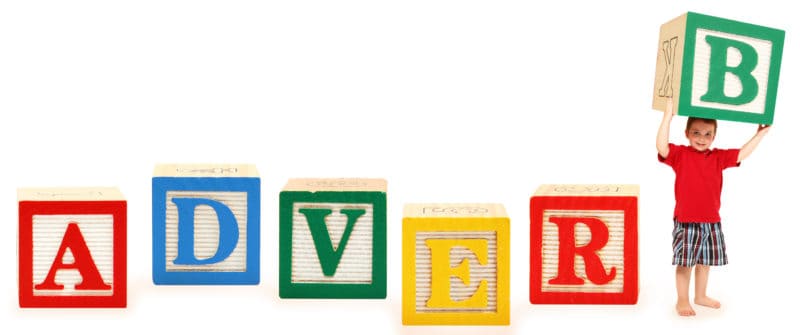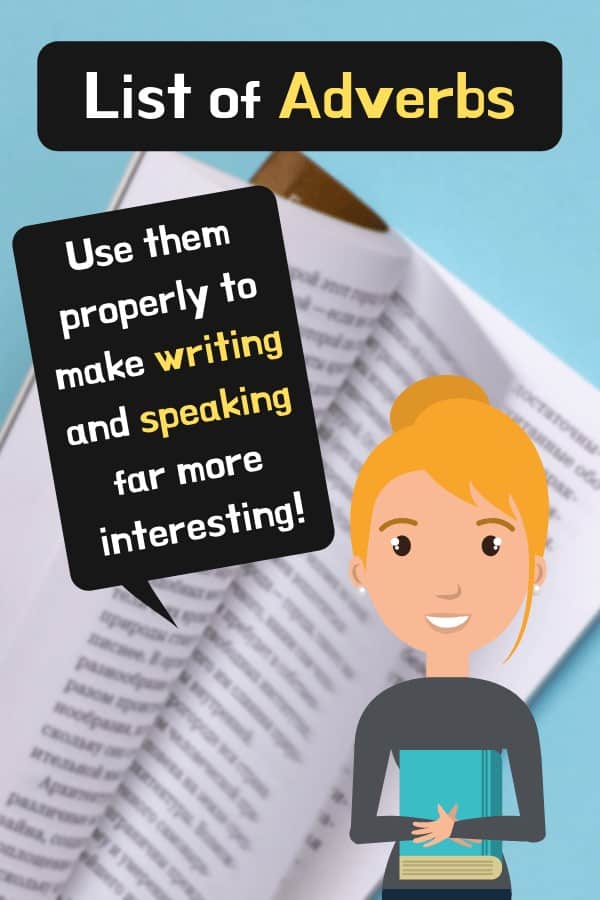Scroll halfway down to go straight to the big list of adverbs. We have compiled this list to kick-start your child's language learning experience!
Why do you need a list of adverbs?
If you watched Schoolhouse Rock as a child, you probably remember the song Lolly, Lolly, Lolly, get your adverbs here. This catchy song told you how adverbs were at your service to enrich your language in various ways. Now that you have the tune stuck in your head, keep reading to brush up on adverbs via the handy list of adverbs.

©BNP Design Studio/Shutterstock.com
An adverb is a modifying part of speech. It describes verbs, other adverbs, adjectives, and phrases. They are used to describe how, where, when, how often, and why something happens. Here are a few examples:
Verb- The cat climbed quickly up the tree. (quickly describes how the cat climbed)
Adverb- Mike worked very carefully on his paper. (very shows how carefully he worked) Adjective- She is nearly ready to go. (nearly tells to what extent she is ready)
Adverbs of manner
Certain adverbs can describe how something happens. Where there are two or more verbs in a sentence, adverb placement affects the meaning. Some commonly used adverbs of manner include:
carefully
correctly
eagerly
easily
fast
loudly
patiently
quickly
quietly
and well.
Consider the following example:
She decided to write her paper. (no adverbs)
She quickly decided to write her paper. (her decision was quick)
She decided to write her paper quickly. (her writing was quick)

©Mangostar/Shutterstock.com
Adverbs of place
Adverbs of a place can describe where something happens. Most adverbs of place are also used as prepositions. Some commonly used examples include the following:
abroad
anywhere
downstairs
here
home
in
nowhere
out
outside
somewhere
there
underground
upstairs.
I wanted to go upstairs.
She has lived in the city since June. (in the city prepositional phrase)

©fizkes/Shutterstock.com
Adverbs of purpose
Describe why something happens. Here are some common examples:
so
so that
to
in order to
because
since
accidentally
intentionally
and purposely.
Jenny walks carefully to avoid falling.
Bob accidentally broke the vase.

©dezign56/Shutterstock.com
Adverbs of frequency
Describe how often something happens. The following adverbs are commonly used in this way:
always
every
never
often
rarely
seldom
sometimes
and usually.
Mackenzie gets a ride from her brother every day.
The fish usually swims near the top of its tank.

©Vojce/Shutterstock.com
Adverbs of time
Describe when something happens. These examples are commonly used:
after
already
during
finally
just
last
later
next
now
recently
soon
then
tomorrow
when
while
and yesterday.
He came home before dark.
It will be too dark to play outside soon.
Jessica finished her supper first.
Andy left school early.

©VOJTa Herout/Shutterstock.com
Some adverbs often get overused, such as very, extremely, and really. Using there is/are or it is at the beginning of a sentence adds nothing. Sentences with these adverb phrases become wordy, boring, and less clear. Look at some examples:
- There are many bird species living in the sanctuary. Many bird species live in the sanctuary.
- It is important to hold hands when crossing the street. Holding hands when crossing the street is important.
- There may be more than one way to solve the problem. The problem may be solved in more than one way.
Well, did you catch all that? Recognizing the various adverbs used in the English language can take practice. Using them properly can make writing and speaking far more interesting.

©Ixepop/Shutterstock.com
Now you have a list of adverbs because you read this article carefully and thoroughly…
Adverbs of Completeness
Everywhere
here
there
List of Common Adverbs
| A
abnormally | B
badly | C
calmly | D
daily | E
easily |
| F
fairly | G
generally | H
happily | I
immediately | J
jaggedly |
| K
keenly | L
lazily | M
madly | N
naturally | O
obediently |
| P
painfully | Q
quaintly | R
rapidly | S
sadly | T
tenderly |
| U
ultimately | V
vacantly | W
warmly | Y
yawningly | Z
zealously |

